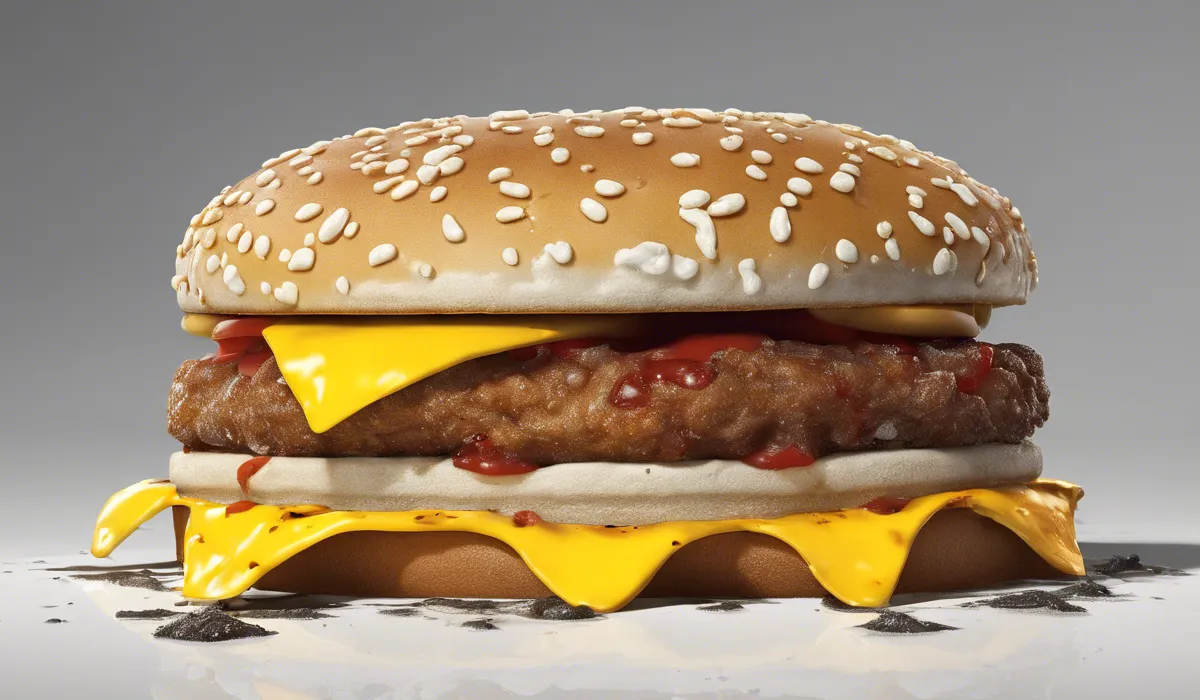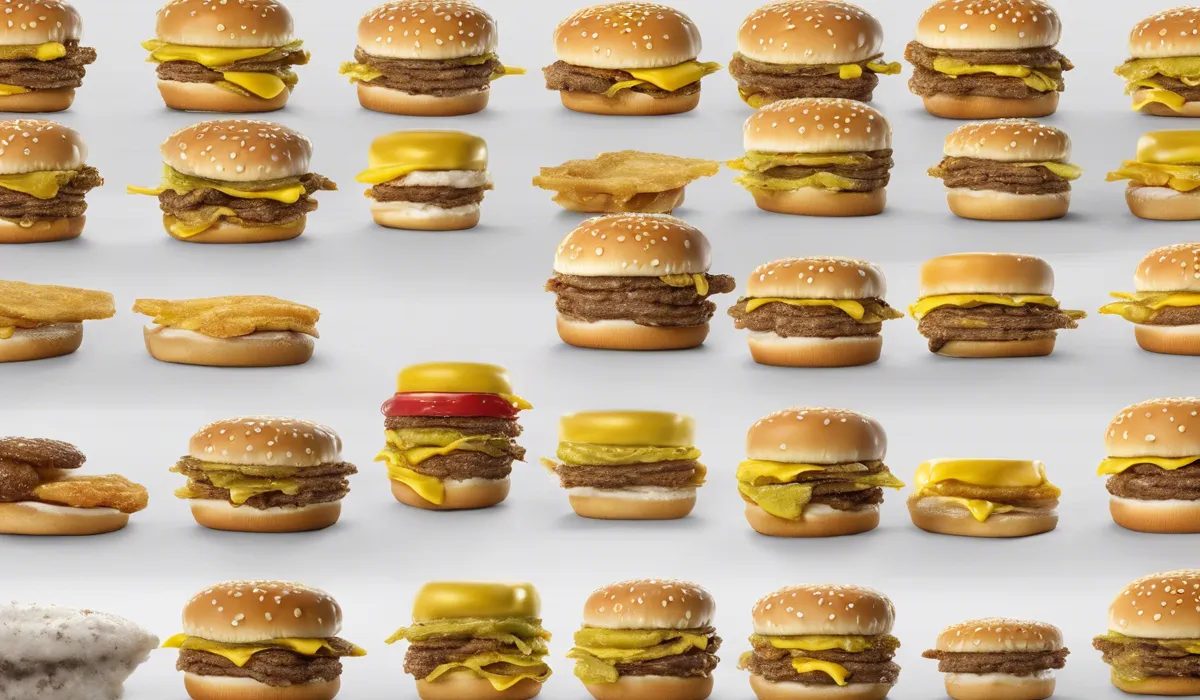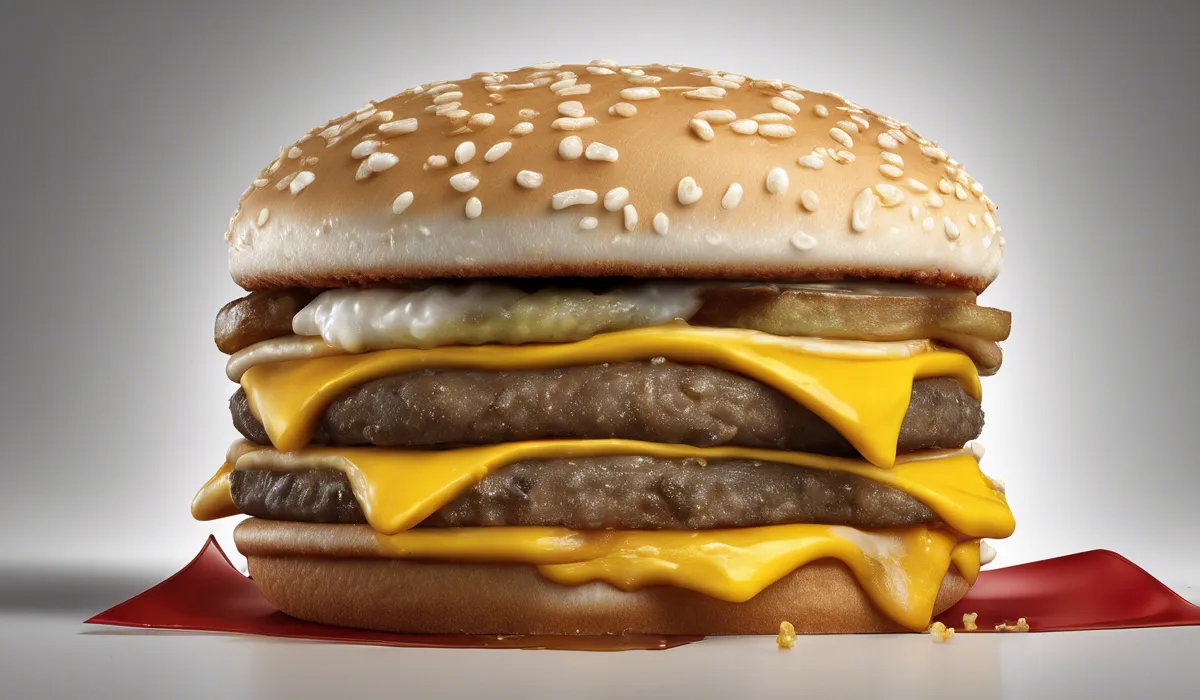McDonald’s food can mold but may do so more slowly due to low moisture content and preservatives. Under the right conditions, such as exposure to air and humidity, mold growth is possible. However, tightly sealed and dry environments could inhibit this process.
Science Behind Food Decay and Preservation

Factors Influencing Food Spoilage
Food spoilage is a natural process that can be affected by several factors. Moisture is one of the primary culprits, as it provides the perfect environment for bacteria and mold to thrive.
Light and temperature also play significant roles in the rate at which food decays, with higher temperatures generally accelerating spoilage. Airborne bacteria and mold spores are everywhere, waiting for the right conditions to proliferate.
Preservatives in Fast Food
Fast food often contains preservatives to prolong shelf life and maintain flavor and texture.
These preservatives can inhibit the growth of bacteria and mold, making the food less susceptible to spoilage. From sodium benzoate to calcium propionate, these additives are common in the fast-food industry.
McDonald’s Ingredients and Preservation
McDonald’s utilizes specific ingredients with preservative properties. For instance, their buns often contain preservatives that prevent mold growth, while the low moisture content in their patties reduces the likelihood of spoilage.
These measures contribute to the longer shelf life of their products when compared to homemade food.
Comparison with Homemade Food Shelf Life
When compared to homemade food, McDonald’s products can seem to last an unnaturally long time without visible spoilage.
Homemade food typically lacks the preservatives found in fast food and often has higher moisture content, which means it will generally spoil faster.
McDonald’s Food and Mold

Experiments on McDonald’s Food
There have been several experiments that showcase McDonald’s food under various conditions.
Time-lapse videos often reveal that under certain circumstances, McDonald’s food does not mold for an extended period. These experiments provide a visual representation of the food’s resistance to spoilage.
Viral Social Media Posts
Posts claiming that McDonald’s food doesn’t mold have gone viral on social media, sparking debate and curiosity.
These photos and videos have contributed to the public’s perception that McDonald’s food contains unnatural ingredients or excessive preservatives.
Scientific Analysis of Experiments
Scientific analysis suggests that the conditions under which these experiments are conducted, such as lack of humidity and air, play a crucial role in the absence of mold. It’s important to consider these factors when evaluating the results of such experiments.
The Truth About McDonald’s Food and Its Resistance to Mold

McDonald’s Official Statements
McDonald’s has made official statements regarding their food preservation techniques, often emphasizing the quality and safety of their ingredients.
They acknowledge the use of preservatives where necessary to ensure the longevity and consistency of their products.
Expert Insights on Fast Food Preservation
Food scientists and microbiologists explain that certain fast foods, including items from McDonald’s, are less prone to mold due to their composition and the preservatives used.
These experts shed light on the science behind food preservation and its application in the fast-food industry.
Health Implications of Preserved Foods
Consuming highly preserved foods has raised health concerns among consumers and health advocates.
While these additives are generally recognized as safe, it is essential to consider the potential long-term effects of consuming preservative-laden foods.
Making Informed Choices About Food Preservation
Consumers can make informed choices by understanding food preservation techniques and the ingredients in their meals.
Knowing how to read labels and recognizing preservatives can help individuals make healthier decisions about what they eat.
FAQs About McDonald’s Food Mold
Can McDonald’s food mold?
Yes, McDonald’s food can mold under the right conditions, which include exposure to air and humidity.
Why does McDonald’s food sometimes not mold easily?
McDonald’s food may not mold easily due to its low moisture content and the presence of preservatives, which can slow down the molding process.
How long does it take for McDonald’s food to mold?
The time it takes for McDonald’s food to mold varies depending on environmental factors like air and humidity, but it may take longer compared to some other foods due to its composition.
What conditions promote mold growth on McDonald’s food?
Mold growth on McDonald’s food is promoted by conditions that include exposure to air, humidity, and warm temperatures.
Is it possible for McDonald’s food to never mold?
While it is unlikely for McDonald’s food to never mold, tightly sealed and dry environments could significantly inhibit the molding process, potentially leading to no visible mold for an extended period of time.
Final Thoughts
McDonald’s food is capable of molding, albeit at a slower rate due to its low moisture content and the presence of preservatives.
Mold will form under conditions that provide air and humidity. Conversely, food stored in dry, airtight environments is less likely to exhibit mold growth.
